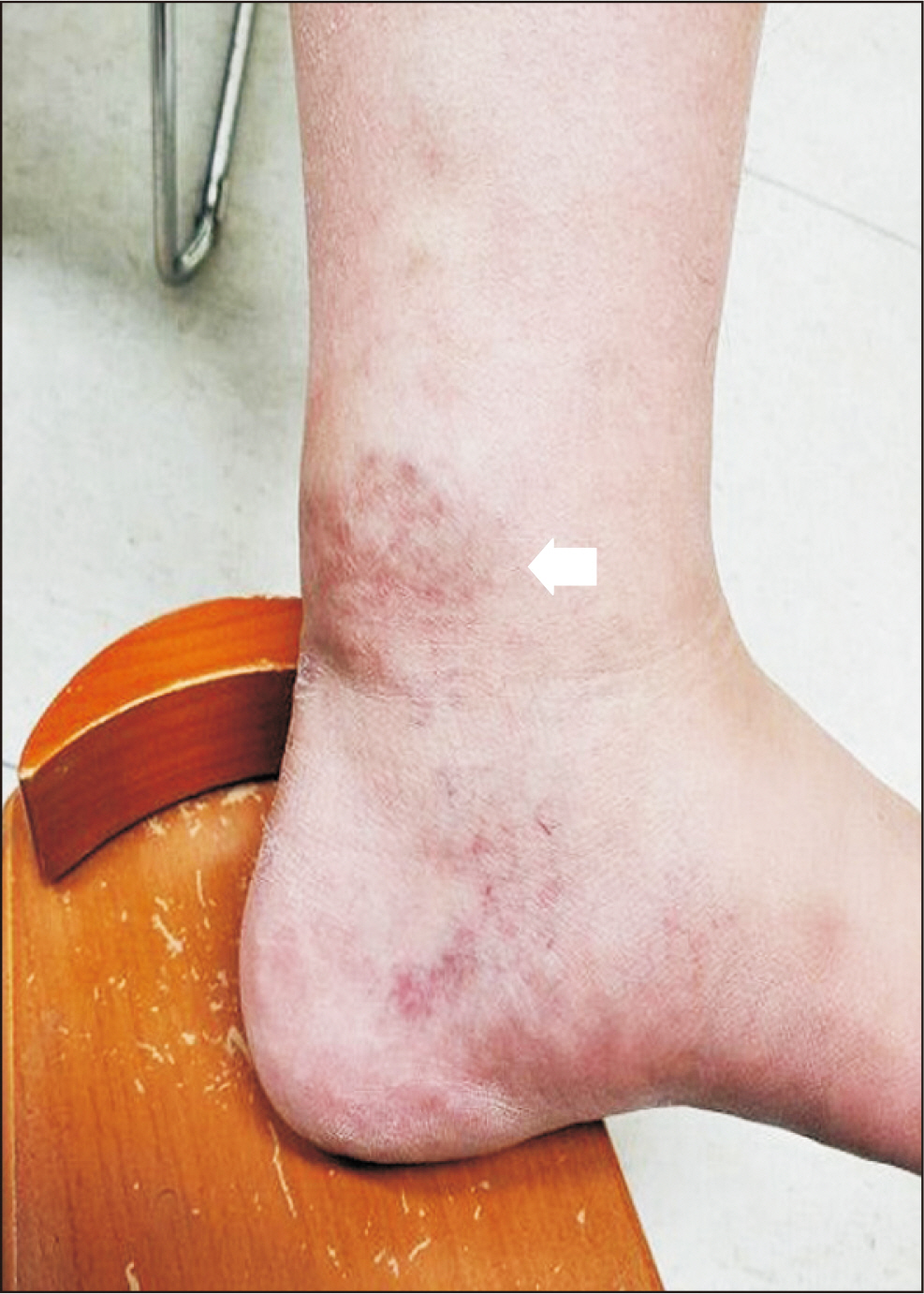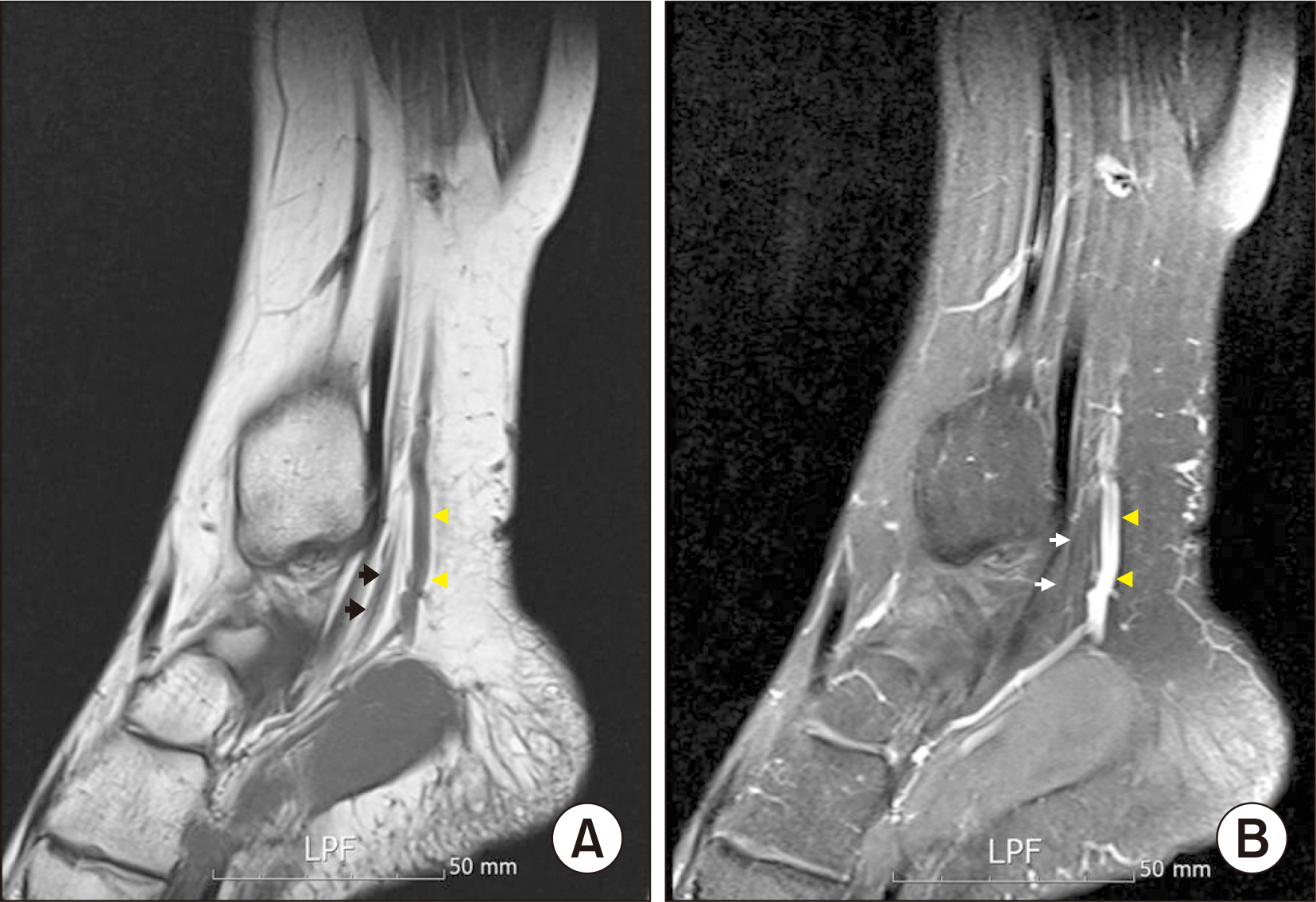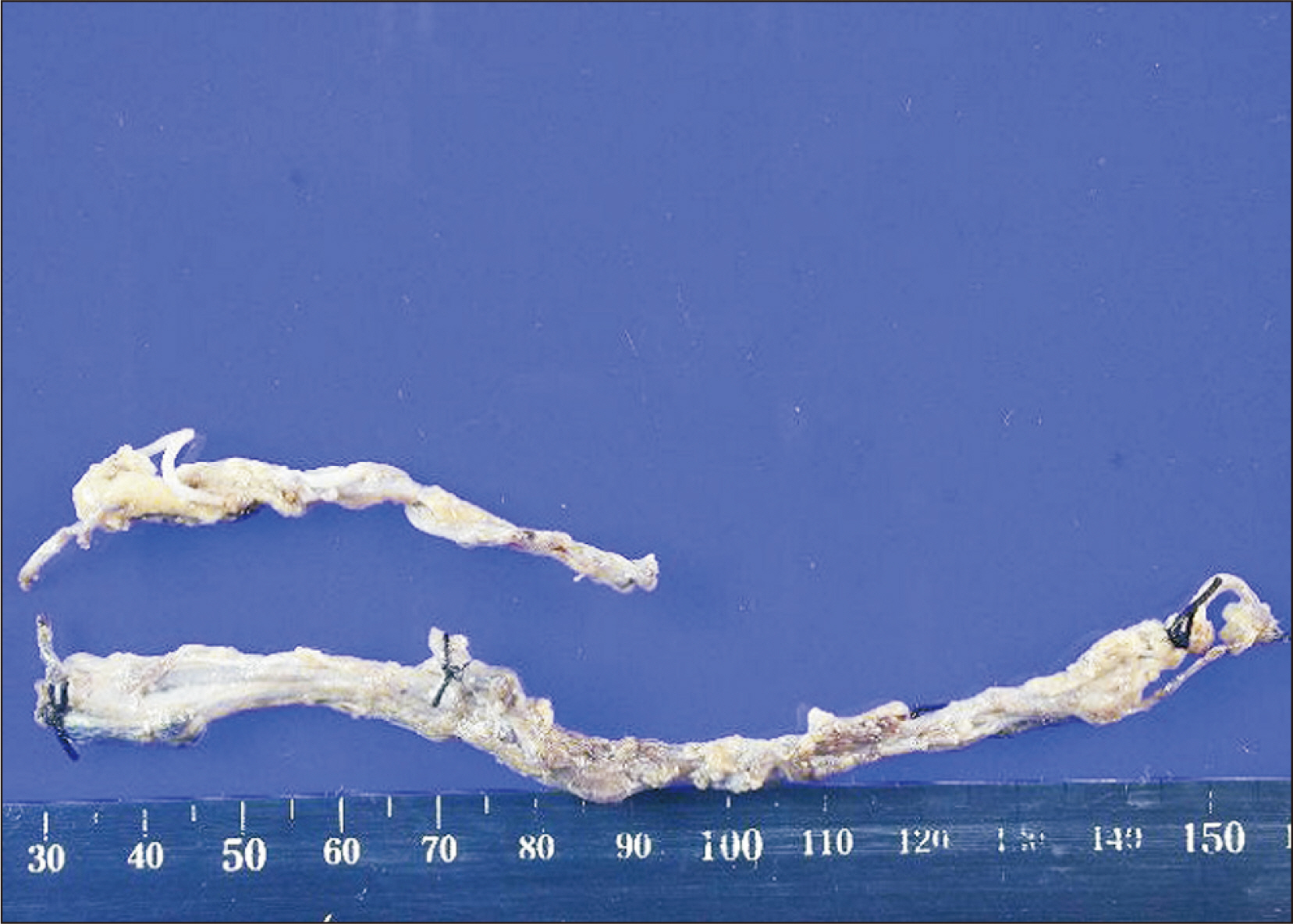J Korean Foot Ankle Soc.
2023 Dec;27(4):158-161. 10.14193/jkfas.2023.27.4.158.
Tarsal Tunnel Syndrome due to Varicose Veins Misdiagnosed as Ganglion Cyst: A Case Report
- Affiliations
-
- 1Department of Orthopaedic Surgery, Wonkwang University Sanbon Hospital, Wonkwang University School of Medicine, Gunpo, Korea
- KMID: 2553010
- DOI: http://doi.org/10.14193/jkfas.2023.27.4.158
Abstract
- Tarsal tunnel syndrome is a nerve entrapment syndrome of posterior tibial nerve as it passes through the tarsal tunnel. The patient presented posteromedial malleolar swelling, palpable mass and pain, and was misdiagnosed as ganglion cyst in the other clinic. Aspiration and steroid injection were done for years, which had no significant effect on symptom relief. As skin lesion and pigmentation abruptly appeared around the palpable mass, MRI and physical exam were done in our hospital. The patient was diagnosed as varicose veininduced tarsal tunnel syndrome and therefore tarsal tunnel decompression following dilatated varicose vein resection was done. The patient’s symptom was improved after the surgery. Therefore, herein we report this case.
Figure
Reference
-
References
1. Kim MJ, Ahn JH, Choi KY. 2017; Diagnosis and treatment of tarsal tunnel syndrome. J Korean Orthop Assoc. 52:291–7. doi: 10.4055/jkoa.2017.52.4.291. DOI: 10.4055/jkoa.2017.52.4.291.2. Jung YG, Suh BC, Kim YB, Chung PW, Moon HS, Yoon WT, et al. 2014; Bilateral tarsal tunnel syndrome secondary to varicose veins. J Pain Auton Disord. 3:34–7.3. Kobashi Y, Ogiwara S, Fukuda K, Kubota M. 2016; Tarsal tunnel syndrome due to varicose vascular structures: a case report. Radiol Open J. 1:17–20. doi: 10.17140/ROJ-1-103. DOI: 10.17140/ROJ-1-103.4. Teng HC, Chou YJ, Tsai MY, Chen CKH. 2012; Varicosities induced tarsal tunnel syndrome: a case report. J Radiol Sci. 37:175–7. doi: 10.6698/JRS.201212_3704.06. DOI: 10.6698/JRS.201212_3704.06.5. Falovic R, Nambiar M, Boekel P, Lenaghan J. 2019; Varicose veins causing tibial nerve compression in the tarsal tunnel. BMJ Case Rep. 12:e230072. doi: 10.1136/bcr-2019-230072. DOI: 10.1136/bcr-2019-230072. PMID: 31079049. PMCID: PMC6536195.
Article6. Kang JW, Koo JH, Song SH. 2010; Bilateral tarsal tunnel syndrome caused by space-occupying lesion: a case report. Clin Pain. 9:36–40.7. Yosipovitch G, Nedorost ST, Silverberg JI, Friedman AJ, Canosa JM, Cha A. 2023; Stasis dermatitis: an overview of its clinical presentation, pathogenesis, and management. Am J Clin Dermatol. 24:275–86. doi: 10.1007/s40257-022-00753-5. DOI: 10.1007/s40257-022-00753-5. PMID: 36800152. PMCID: PMC9968263.
Article
- Full Text Links
- Actions
-
Cited
- CITED
-
- Close
- Share
- Similar articles
-
- Surgical Decompression of Tarsal Tunnel Syndrome Associated with Ganglion Cyst: A Case Report
- A Ganglion Cyst around the Tarsal Tunnel Detected by Ultrasonography and MRI : A case report
- Ganglion of Flexor Digitorum Longus Tendon Sheath and Multifocal Myxoid Degeneration of Medial Plantar Nerve Producing Tarsal Tunnel Syndrome: A Case Report
- Tarsal Tunnel Syndrome Resulting from a Joint Originated the Intraneural Ganglion of the Medial Plantar Nerve: A Case Report: Surgical Treatment for Prevention of Recurrence
- Update on Management of Compressive Neuropathy: Tarsal Tunnel Syndrome






